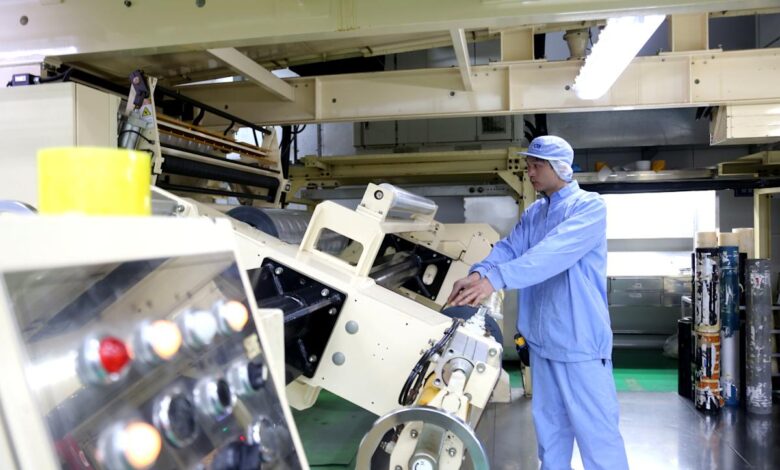Pharma manufacturing ‘boom’ faces high costs, potential delays

The pharmaceutical manufacturing industry in the United States is gearing up for a significant wave of investments, with over $270 billion in commitments already in place. Companies like Johnson & Johnson and Eli Lilly are leading the charge with multi-billion-dollar investments over the next few years to expand their manufacturing capabilities.
While some may view these announcements as a sudden response to the threat of tariffs from the Trump administration on imported pharmaceutical goods, the reality is that many of these plans have been in the works for years. The global manufacturing footprint of pharmaceutical companies has been under scrutiny, especially in light of the disruptions caused by the COVID-19 pandemic. Additionally, the expiration of patents has led to increased research and development activities, necessitating a higher volume of local manufacturing.
Sandy Romero, head of life sciences and healthcare insights at Cushman & Wakefield, explains that while some plans may have been accelerated to avoid tariffs, the decision to open new plants is a strategic move that takes years of planning. Companies like Eli Lilly are aligning their new plans with the goal of repatriating the supply chain, bringing back basic chemical component production to the US.
The $270 billion investment figure may actually be an undercount, as some companies have chosen not to make flashy announcements about their manufacturing plans. The focus on regionalizing supply chains and mitigating risks has been a driving force behind these investments, rather than just responding to political pressures.
As the construction industry gears up for a flurry of activity to support these new manufacturing facilities, challenges are already emerging. Bryan Northrop, a national executive adviser for science and technology at Skanska USA, notes that the industry is facing a substantial amount of work in a short timeframe. Delays in current building projects, coupled with increased costs and labor shortages due to tariffs and immigration policies, are creating additional hurdles for the construction industry.
The new manufacturing announcements could spark a high-stakes competition among pharmaceutical companies vying for the best construction teams to work on their projects. Despite years of preparation, companies are now facing unexpected challenges that could impact the cost and timeline of their manufacturing expansions. The industry will need to navigate these obstacles to ensure that the investments translate into successful and efficient manufacturing operations in the US. Construction Costs Surge 45% Since 2020, Prompting Concerns of Delays and Challenges
In a recent development, it has been noted that construction prices have surged by a significant 45% since 2020, following a brief decline post-pandemic. This uptick in costs is expected to have far-reaching implications for the industry, potentially leading to more expenses and possible delays in project timelines.
According to industry experts like Romero, the rising costs could result in more pauses in ongoing projects as it becomes increasingly challenging to attract workers to job sites. Additionally, the pausing of immigration into the country further exacerbates the labor shortage issue faced by the construction sector.
Arda Ural, Americas life sciences leader at EY, highlighted the unique challenges faced by different companies based on their project size and scope. He emphasized that the current confluence of events is creating a historical nexus that is putting immense pressure on the construction industry.
As companies grapple with these challenges, Jennie Taveras, vice president and life science sector lead at STO Building Group, anticipates a greater level of collaboration between larger construction firms and smaller entities. This collaborative approach is seen as crucial for navigating the complex landscape of escalating construction costs and project demands.
The debate surrounding whether the construction rush will bring manufacturing back to its historical highs in the US remains ongoing. Legacy hubs in the northeast, North Carolina, the West Coast, and Chicago have traditionally been key locations for manufacturing facilities. However, emerging regions like Ohio, Georgia, Texas, and Florida are now being considered as potential sites for new projects.
Manning these facilities with highly skilled labor is another critical consideration for drugmakers. While automation and robotics have reduced the labor requirements for running these sites, the need for skilled workers remains paramount. Despite the push to diversify manufacturing locations across the US, experts like Pernenkil suggest that not all states may be viable for hosting new facilities due to workforce challenges.
In conclusion, the construction industry is facing unprecedented challenges due to the surge in costs and labor shortages. As companies navigate these hurdles, collaboration, innovation, and strategic decision-making will be key to overcoming the obstacles and ensuring the successful completion of projects in a rapidly evolving environment. If you are looking for a way to improve your mental health and overall well-being, you may want to consider incorporating yoga into your daily routine. Yoga is a practice that combines physical postures, breathing techniques, and meditation to help improve flexibility, strength, and mindfulness.
One of the key benefits of practicing yoga is its ability to reduce stress and anxiety. Through the practice of deep breathing and mindfulness, yoga can help calm the mind and body, allowing you to better cope with the daily stresses of life. Research has shown that regular yoga practice can lower levels of cortisol, the stress hormone, and improve overall feelings of well-being.
In addition to reducing stress, yoga can also improve mental clarity and focus. The practice of yoga requires you to be fully present in the moment, focusing on your breath and the movements of your body. This can help improve your ability to concentrate and make better decisions, both on and off the mat.
Yoga is also a great way to improve physical health. The physical postures and movements of yoga can help improve flexibility, strength, and balance. This can help prevent injuries and improve overall physical fitness. Additionally, yoga can help improve circulation and digestion, leading to better overall health.
Another benefit of yoga is its ability to improve sleep quality. Many people who practice yoga report better sleep patterns and a deeper, more restful sleep. The relaxation and mindfulness techniques practiced in yoga can help calm the mind and body, preparing you for a restful night’s sleep.
If you are new to yoga, there are many resources available to help you get started. You can find yoga classes at local studios, community centers, or online. There are also many beginner-friendly videos and tutorials available that can help you learn the basics of yoga from the comfort of your own home.
Overall, incorporating yoga into your daily routine can have a positive impact on your mental and physical well-being. Whether you are looking to reduce stress, improve focus, or enhance your physical fitness, yoga can be a beneficial practice for anyone looking to improve their overall health. So why not give it a try and see the benefits for yourself?





